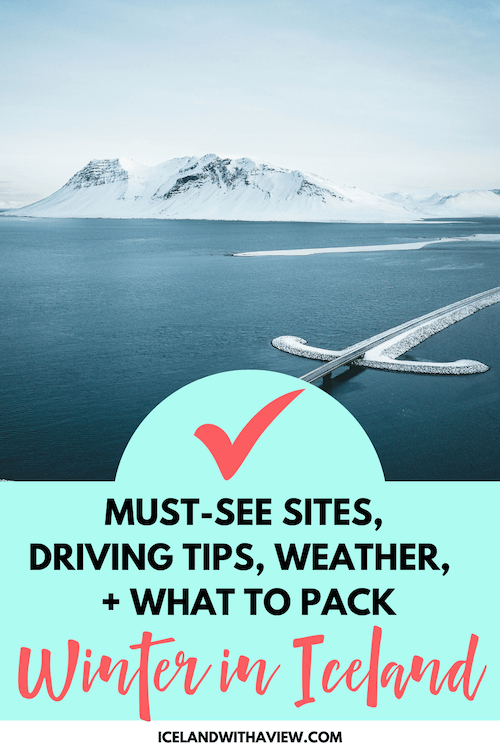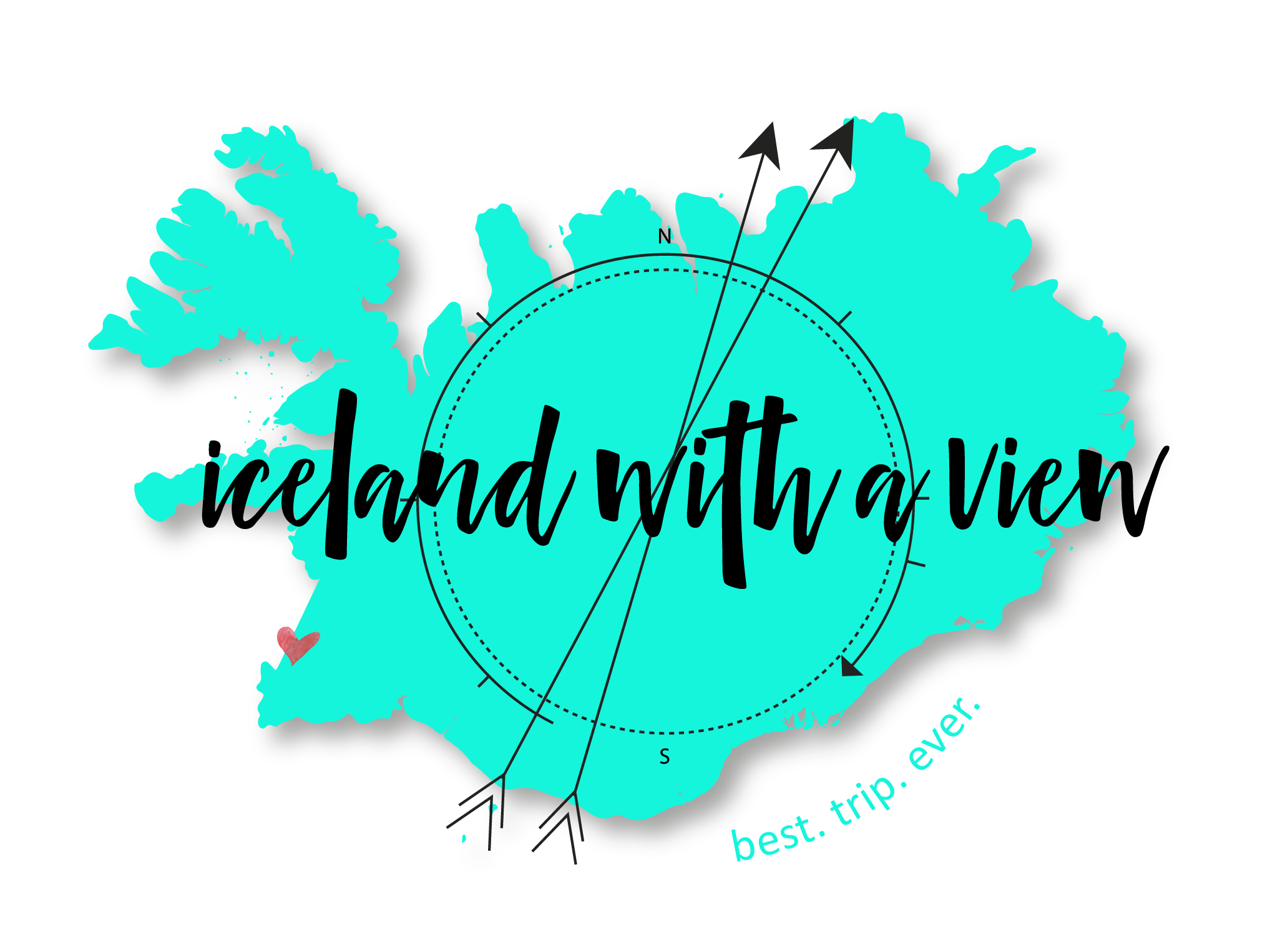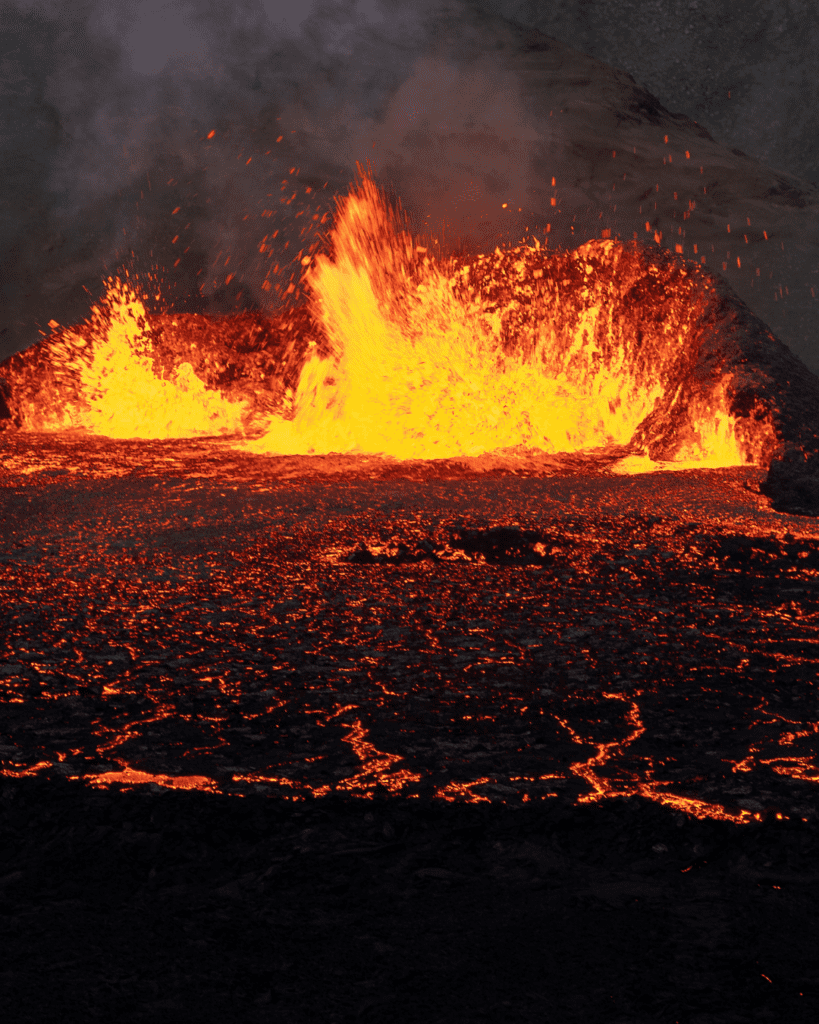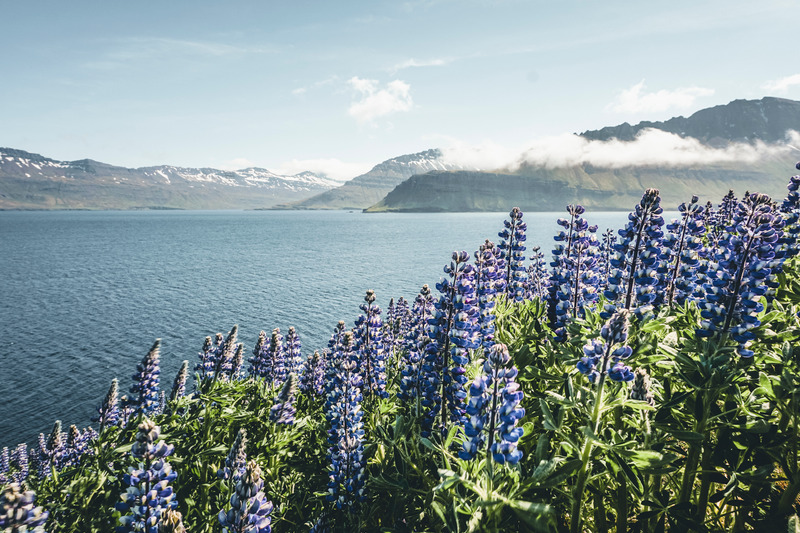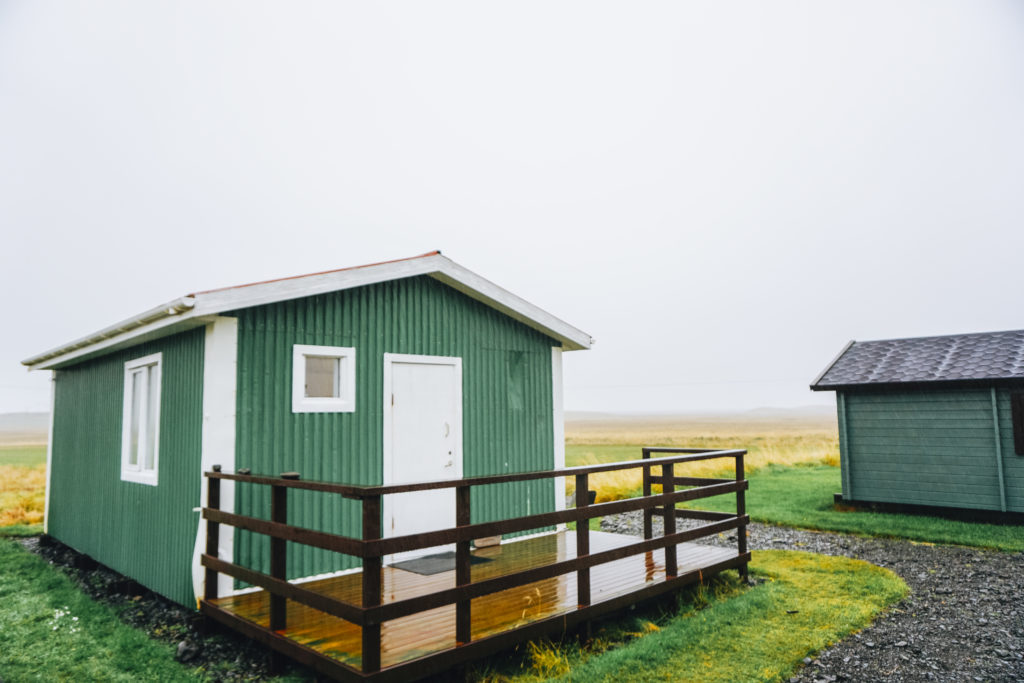Iceland in the winter is unbelievably beautiful!
The landscapes are covered in a blanket of snow and stunning Golden Hour sunsets steal the breath right out of your lungs.
Oh, and they make for spectacular photographs!
Now, before you dive into planning your trip, there are a few important things to consider to ensure you squeeze every bit of magic out of your Icelandic experience.
In this ultimate guide, I’ll be covering what you can expect with the weather, essential safety tips, what to wear, and fun things to do here in the winter.
Ready, set, GO!
Table of Contents:
- Is Winter a Good Time to Visit Iceland?
- Winter weather in Iceland
- Iceland in Winter: Daylight Hours
- Is it Safe to Drive in Iceland in the Winter?
- What to Wear in Iceland in Winter
- Things to Do in Iceland in the Winter
- Festivals and Events
- Iceland Winter Itinerary
Is Winter a Good Time to Visit Iceland?
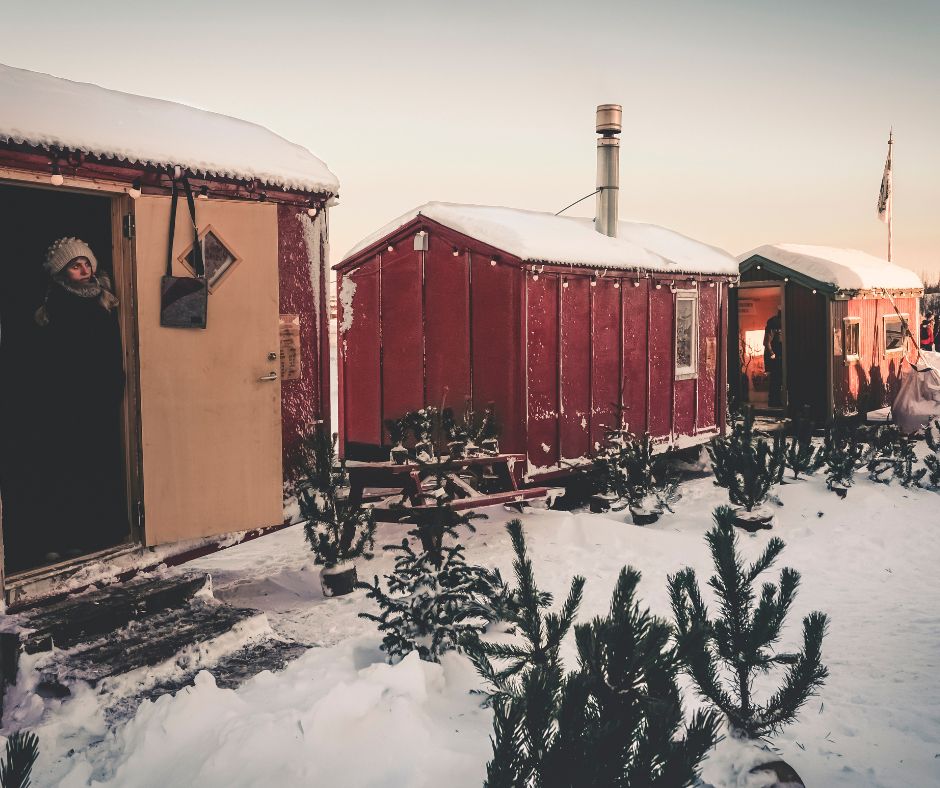
Choosing between Iceland in the summer or winter is like asking to pick a favorite child!
Each season is incredibly special, with its own sets of pros and cons. The summer and winter landscapes are so different, like night and day – literally! 😉
But here are a few reasons why you shouldn’t overlook visiting Iceland in the winter:
Off-peak season: The huge plus during low season is that there are fewer crowds at the popular attractions. Flights and accommodation are also generally cheaper making a winter trip more budget-friendly.
Northern lights: Longer, darker days equal the best time of year to spot the aurora. Let me tell you, this is a must-see spectacle if you haven’t experienced it yet.
Festive season and Christmas markets: These look like scenes taken right out of a fairy tale. Towns and cities are covered in twinkling Christmas lights and you can truly feel the excitement of the holiday season.
Incredible scenery, natural attractions and seasonal activities: Rugged snow-covered landscapes, glaciers, ice caves, waterfalls, geothermal pools, whale watching, snorkeling etc. Seriously, are you kidding me?! This place has everything!
Winter Weather in Iceland
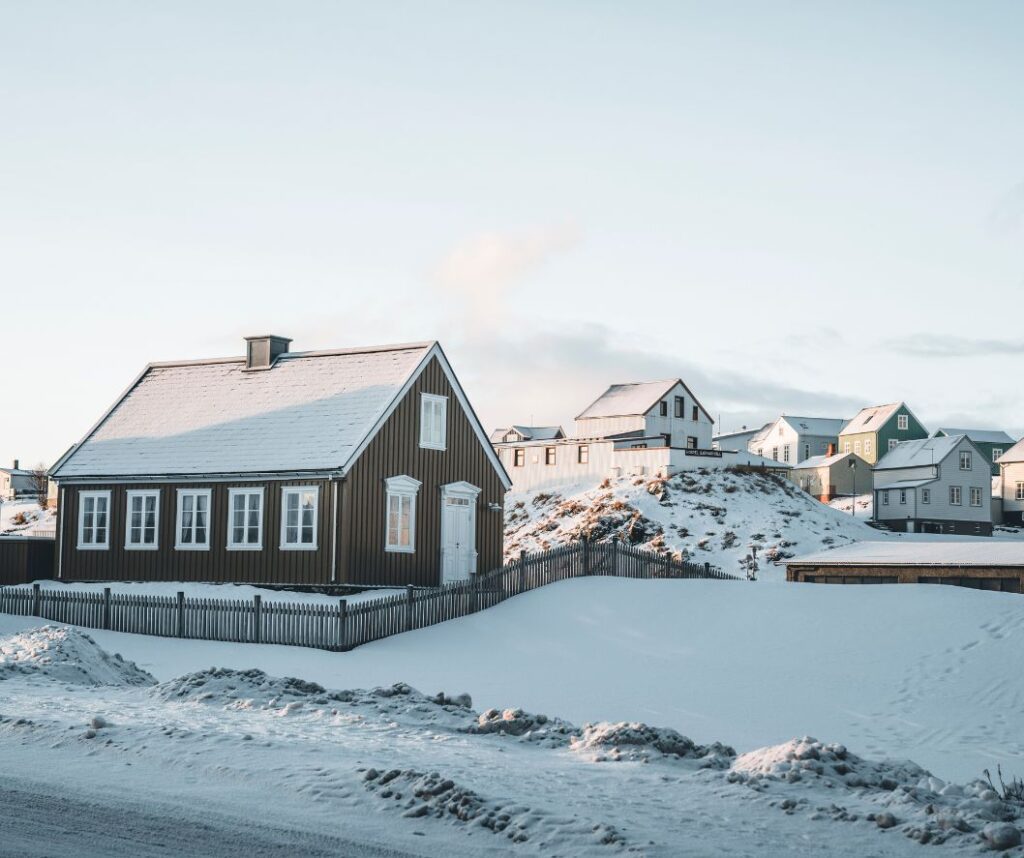
Winter in Iceland spans from November to April.
Before delving into trip planning, it’s essential to familiarize yourself with the winter weather in Iceland.
Snow: As you travel towards the interior and Golden Circle, you can expect to see a lot more snow.
With Reykjavík on the coast, it doesn’t always get heavy snowfall.
Other places that don’t receive a lot of snow are Vik and the black sand beaches of South Iceland.
This being said, it’s always a good idea to be prepared for snowy conditions in the wintertime.
Wind: Iceland is pretty windy year-round, but it is really amplified in the winter. The wind chill factor makes it feel SO much colder and you can feel it right down to your bones!
The winds are powerful and as a result, you may need to adjust your plans that day. But no biggie, as they say, if you don’t like the weather in Iceland, just wait a few minutes – it’s bound to change! 😉
Ice: Be prepared for ice and slippery surfaces, especially around the waterfalls. Crampons are going to be a lifesaver whether you’re in the city or out sightseeing at the natural attractions.
Winter Temperatures in Iceland
Despite what you may think, winter in Iceland is not that cold.
Now, granted, I did grow up in Wisconsin, so I’m used to freezing conditions, but even so, Iceland’s winter temperatures range from -2 to 4 degrees Celcius (28 – 40 degrees Fahrenheit) around the main areas.
For weather alerts and information on temperature, snow and winds that day, check out this website.
Iceland in Winter: Daylight Hours
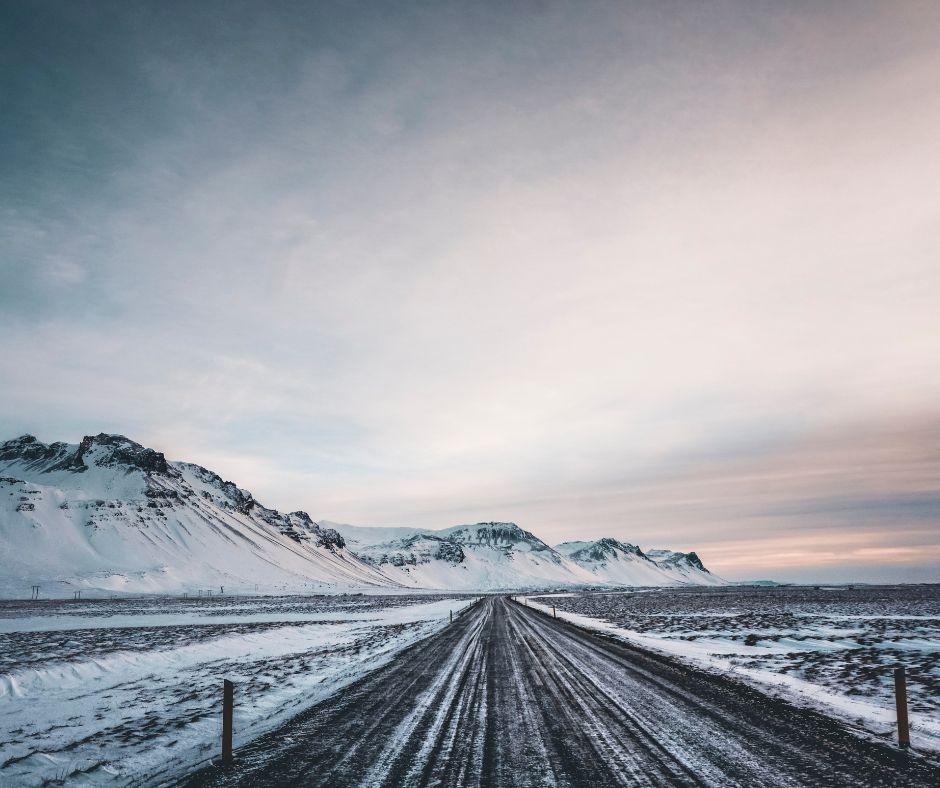
I’ve said it before and I’ll say it again, the most important thing you need to know when planning your trip to Iceland is the number of daylight hours you have to work with.
The nights are significantly longer in the winter time which will affect the hours you have available for sightseeing.
It may feel like hibernation time, but don’t get me wrong, there’s still so much to see and do.
At the start of November, you can expect about 8 hours of daylight, but by mid-December, it’s down to 4 hours – so you’ll need to plan your days carefully.
December 21st marks the winter solstice in Iceland – the shortest day of the year. But the good news is that by the end of January, it’s up to about 7 hours and the days start getting even longer after that.
Pro tip: when dealing with winter darkness in Iceland, try waking up at the same time every day, this really helps with productivity.
➡️ Check out this vlog I did on the Darkest Day of the Year
Is it Safe to Drive in Iceland in the Winter?
I get this question all the time.
You may be nervous about the snow, ice on the roads and visibility, especially with the long dark hours in the winter.
Sure, winter driving in Iceland has its own unique set of challenges, but I’d still 100% recommend it.
You may want the freedom to stop and explore hidden gems and adjust your itinerary on a whim which you just can’t do when you’re on organized tours.
That being said, you HAVE to be prepared and take all the necessary precautions to make your driving experience here a safe one.
Here are a few important tips to keep safety a priority:
Four-Wheel-Drive
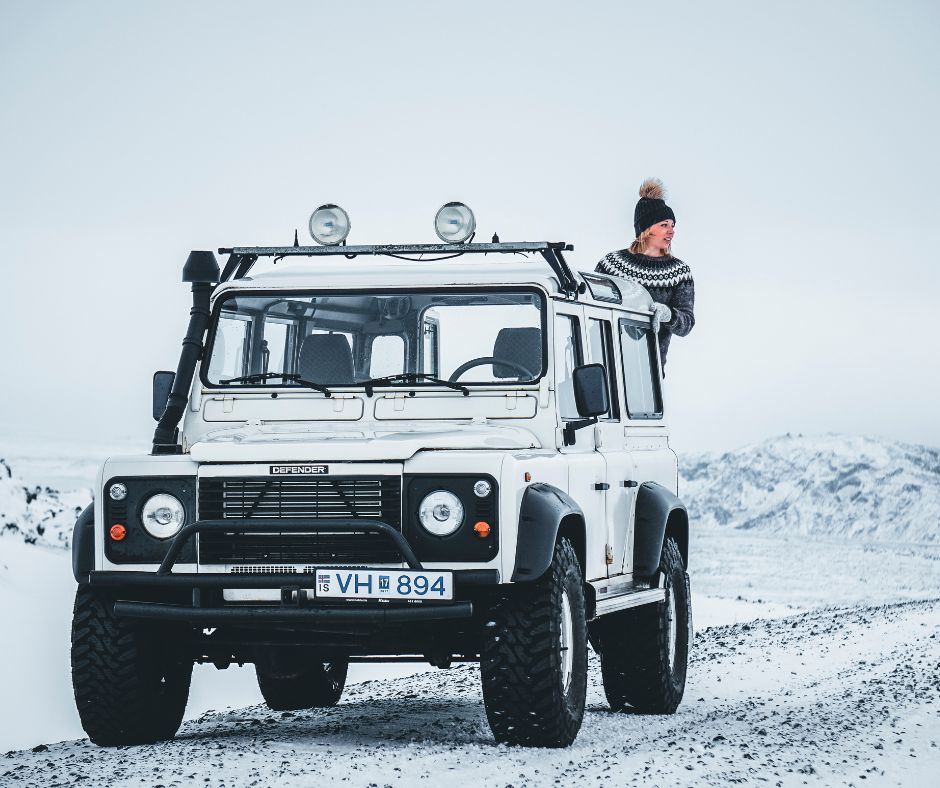
If you’re going to be driving in winter, a four-wheel drive is, in my opinion, non-negotiable.
They’re heavier, making it easier to navigate through snow drifts. They’re also more expensive to rent, but totally worth the investment.
Safety. First. Always.
I love that Blue Car’s rental cars are fully winter-ready, complete with studded wheels and a 24/7 emergency hotline. Being a local Icelandic company, they have an in-depth understanding of the road conditions.
Always check that your rental car company has winter tires with extra grip or studded tires.
👉 Blue Car Rental discount code: If you’d like a 5% discount off your total rental price use my VIP link – no code needed! ➡️ https://bit.ly/IcelandCarDiscount
Wifi Access
You want to keep on top of the ever-changing weather conditions and having wifi access is another safety must.
There are a few websites I check when out exploring. One of them is Safe Travel Iceland for warnings and alerts for that day.
Having wifi access or mobile data is also super helpful when using my Iceland Guidebooks + Maps so you can easily access my customized Google map with over 500 pinned locations (including road trip essentials like where to park, get gas, and eat along the way!).
Speed
Drive slower! This gives you time to react to hazards.
You’ll notice that the roads in Iceland are very narrow.
You’ll be tempted to move to the side, especially when large trucks drive by. Please don’t! Just slow down, put on your windscreen wipers, and keep going.
Be Prepared, But Flexible
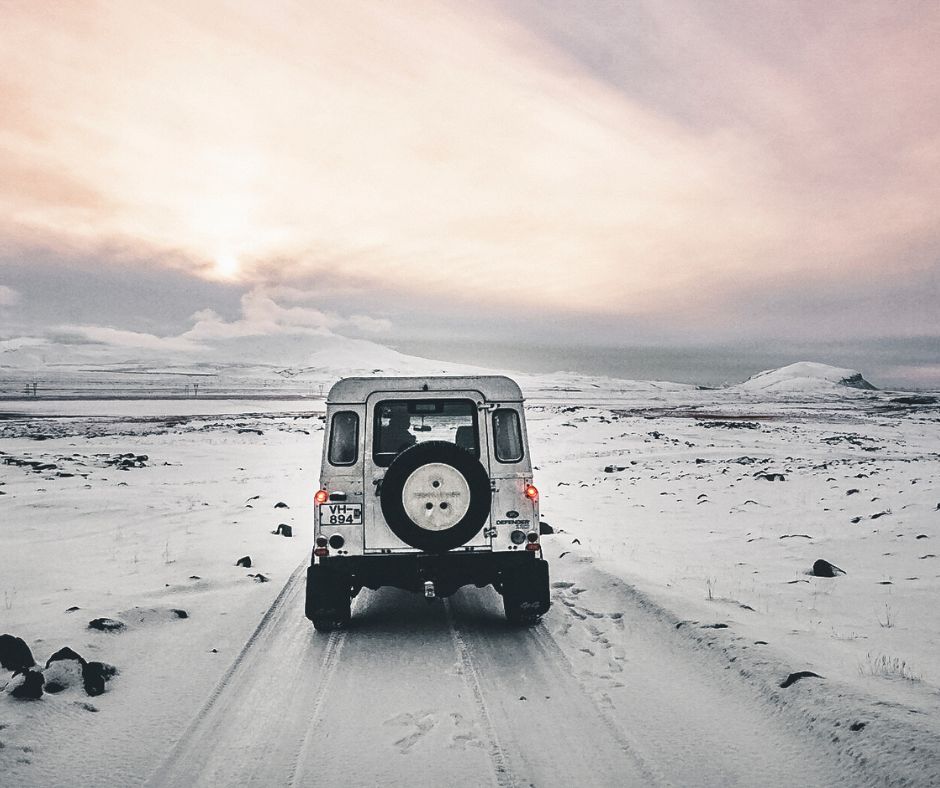
Icelandic weather is temperamental, to say the least! And on paper, your day may look very different to what it does once you venture out.
Always have a backup plan and check out Road.is before heading out for the day for more information on road conditions and closures.
Pack water, snacks and high-quality outdoor gear. You never know when you’ll be stuck in a storm or have to get out of the car to dig yourself out of the snow. I mean, I hope not, but in Iceland, you truly never know! 😅
Stick To The Main Roads
Don’t take backroads or roads that seem like shortcuts, because chances are that they won’t be maintained.
Places around Reykjavík, Golden Circle, Snæfellsnes Peninsula, South Iceland are tended to first after snowstorms.
Listen To The Warnings
They’re there for a reason. I’ve witnessed too many situations where people find themselves in tough spots because they ignore the warnings.
Oftentimes, it’s because they don’t want to lose money due to reservations or simply because they don’t believe that the conditions can be that bad.
Pro Tip: Call 112 if you have an emergency.Whether you’ve got a flat tire, get stuck in a snow drift or get lost, they’ll send someone out to help you.
What to Wear in Iceland in Winter
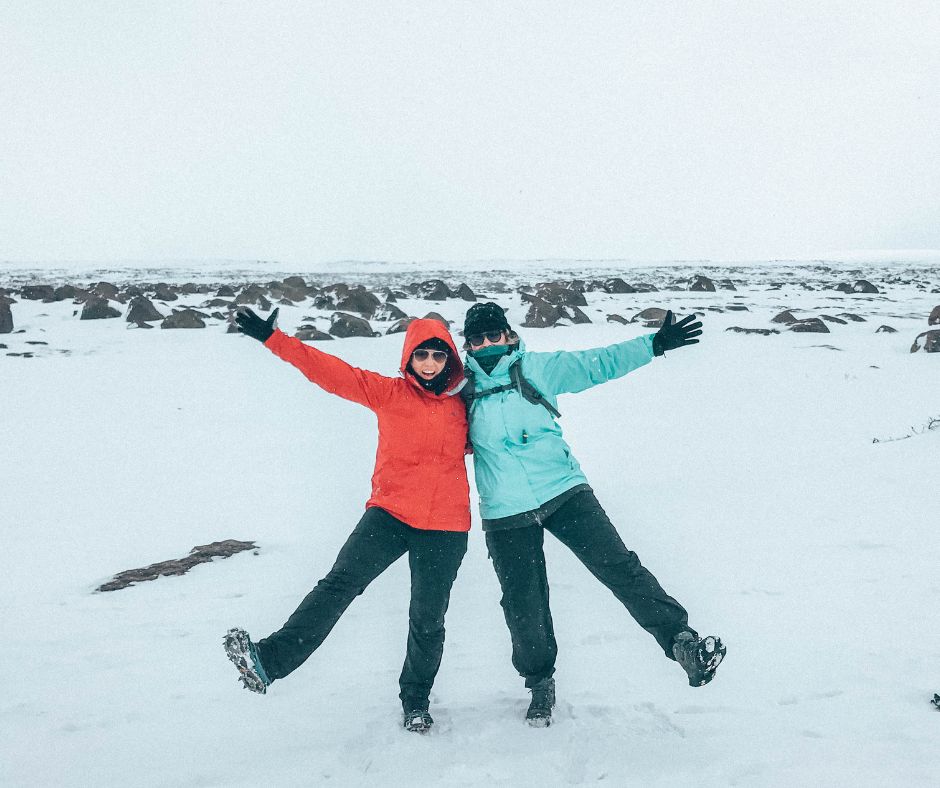
You need to be smart about what to pack for Iceland in the winter because not having the correct gear can seriously impact the experience you’ll have.
Make staying dry and warm a priority.
Outerwear: The first clothing tip I’ve got for you is to make sure that your layers, especially outer layers, are wind and waterproof. I like long parkas that reach down to the knees. The more area it covers, the better! And of course, don’t venture outside without your hat, scarf and gloves.
Thermal layers: Secondly, is to dress inthermallayersthat you can remove if need be. Most days I’ll wear fleece leggings under my pants for extra warmth. I have a slight obsession when it comes to wool – it’s the best for keeping you warm! So, opt for wool sweaters and wool moisture-wicking socks.
Footwear: Good quality, sturdy and comfortable hiking boots are something you’ll use all the time, especially if you plan on exploring the natural attractions
Pro-tip: As I mentioned earlier, everything is icy and the surfaces are incredibly slippery. For this reason, one safety item you have to have is crampons. You attach them to the bottom of your boot and it gives you a better grip so that you don’t end up slipping on the ice and risk serious injury.
➡️ Read this post: Iceland Winter Packing List
Other items: Items you shouldn’t overlook are a swimsuit and quick-dry towel for when you visit the hot springs. Electronics like your camera, charger adapters and inverters are a must (FYI, Iceland uses the Standard European Plug). Prescription medication can be hard to find in Iceland so please bring them along too.
If you’re wondering what else to pack for Iceland in the winter, you’ve got to check out my Ultimate Iceland Packing Guide!
💡I’ve got you covered with packing checklists for summer and winter. Weather information, a layer cheat sheet, and my recommendations for the high-quality gear you’ll need from footwear and jackets to thermal layers.
You’ll also get some local wisdom from yours truly!
Things to Do in Iceland in the Winter
While the highlands are inaccessible during the winter due to heavy snowfall, you may be pleasantly surprised by just how many things you CAN do in Iceland in the winter.
The Northern Lights: Winter in Iceland is the perfect time to view the Northern Lights. The longer nights increase your chances of spotting them.
Just remember that cloud cover and too many city lights will affect visibility. Therefore, the further out the city you get, the better.
I suggest traveling to Reykjanes Peninsula or Þingvellir National Park for better chances of spotting them. If you’re looking for something a little closer to the capital, my personal favorite spot is Heiðmörk, and it’s just outside Reykjavík.
➡️ This post is full of great tips on How to See the Northern Lights in Iceland.
Ice Caves: In winter gorgeous blue ice caves such as Katla are finally safe to explore. Guided tours with an expert will give you peace of mind. Why not visit Reynisfjara Black Sand Beach while you’re at it? A scene from Game of Thrones was filmed there!
Take A Tour: South Coast, Glacier Lagoon and Crystal Blue Ice Cave
Glacier Hikes & Waterfalls: Discover ancient ice formations and impressive landscapes with experienced tour guides leading the way. Try hiking on Sólheimajökull, an outlet glacier of Mýrdalsjökull which is Iceland’s fourth-largest glacier.
Take A Tour: Glacier Hike & South Coast Waterfalls
Blue Lagoon, geothermal pools and hot springs: One of my favorite things to do in the winter is soaking in a geothermal pool, surrounded by the icy landscape, especially after a hike.
The famous Blue Lagoon is accessible year-round and definitely worth visiting, but if you’d like to see what other hot springs Iceland has to offer here’s a roundup of my Top 10 Blue Lagoon Alternatives.
Reykjavík, Golden Circle and South Coast: The city’s capital offers an array of cultural experiences. Sights along the Golden Circle include Þingvellir National Park, the Geysir geothermal area and Gullfoss waterfall.
Watch the vlog below about a road trip I took to South Iceland in the winter 👇
Snorkeling the Silfra: If you thought that snorkeling was only for the summertime, think again my friend! Did you know that the Silfra is one of the top dive sites in the world? It’s cold but totally worth the experience!
Tour: Wetsuit Snorkeling in the Silfra
Lava fields: The Lava Tunnel Raufarhólshellir cave is one of the largest tunnels in Iceland. The different mineral types in the rock explain the colors found on the tunnel wall.
Tour: Lava Tunnel Raufarhólshellir cave
Explore the natural sights and beauty: There are many ways to explore the natural sights. Whether it’s Horseback riding on Icelandic horses, dog sledding or snowmobiling.
Festivals and Events
While you may expect everything to be in hibernation, Reykjavík is buzzing with activity. You’ll be able to enjoy many festivals and events in Iceland during the winter.
Iceland Airwaves: This is known as one of the best festivals in the country and the biggest music festival in Iceland.
Christmas and New Year: Christmas is a big deal in Iceland. It’s a great time of year to get immersed in Icelandic culture and traditions. Discover the Christmas markets and enjoy New Year’s celebrations
READ MORE ➡️ Christmas in Iceland: Your Go-To Guide to Planning the Perfect Trip
Þorrablót: This celebration showcases interesting traditional Icelandic foods and extends from mid-January to mid-February. Þorrablót is also known as the rotten food festival – where do I sign up?!
Reykjavík Winter Lights Festival: In February, lights are displayed on the noteworthy landmarks around Reykjavík as a celebration of art, history, culture and more.
Museums, landmarks and cultural events Reykjavík: The Harpa music hall is a favorite to visit amongst architects. Hallgrímskirkja church is arguably the most recognised landmark in Iceland, with the columns around the church inspired by Svartifoss black waterfall in South Iceland.
There are numerous museums around the city that are also worth visiting such as the Árbæjarsafn Open Air Museum.
Iceland Winter Itinerary
If you want to be prepared for your Iceland winter trip, be sure to check out my ultimate month-by-month guides. Whether you’re visiting Iceland in November or planning a trip to Iceland in April, you’ll get an in-depth look at what you can expect during each winter month.
And remember…
Planning a trip to Iceland in winter is NOT the same as a summer one!
You have limited hours to explore, some areas are inaccessible in the winter and you’re not sure how long it takes to get from place to place.
When you’re in a foreign country, having a planned itinerary with suggested routes and activities is like having a personal tour guide.
It’s an incredibly helpful resource to have!
My planned-for-you Iceland winter itineraries offer
- Pre-planning checklist
- Detailed daily itinerary
- A digital map including the main sights, gas stations, grocery stores, hidden gems etc.
👉 Check out my Iceland Winter Itineraries and take the stress out of planning your winter trip to Iceland.
So, plan smart, embrace the chill, and get ready to be blown away by the impressive beauty of Iceland in winter.
Happy Planning,

Pin it for later! 👇🏻
